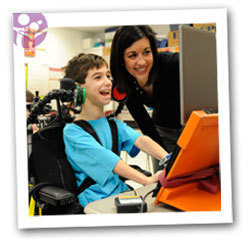Peer Editing
I have always been back and forth on how I feel about peer editing. I like getting the critiques so I know what I need to change. On the other hand, I don’t want to come across like I think I am smarter than my peers and I don’t want to feel like my peers think they are smarter than me. After reading Paige Ellis’s blog, watching the videos, and reading the assigned PowerPoint, I can now feel more comfortable about peer editing. There are a few simple rules that will keep negativity out of peer review and make it even more beneficial.
All of these sources have made it very clear that you must stay positive. You don’t want to come across mean or put anyone down. Also, you should always start your peer review with a compliment. Secondly, make suggestions. Finally, make corrections. I believe that these will be very effective to the peer editing process.
I’m excited to use what I have learned. I think that now peer editing will be completely beneficial and won’t cause hurt feelings or make anyone feel inferior.
This video was really awesome. It showed even more ways how technology is changing education for the better, including special education. Many of the students in this class had major difficulties communicating to the teacher. Now, they can easily type what they are trying to say on their laptops. Also, iPods were used to read aloud to students who needed assistance reading. They can now wear ear phones and still be in the classroom with the rest of their class. There was even one student who had trouble seeing small print. His computer was able to enlarge the print so he was able to see. This was a great video and really had great ideas with how to incorporate technology into special education classrooms.
When I’m teaching, whether I have special education students or not, I will always try my hardest to incorporate technology into my classroom. If I do have special education students, I will take any approach I need to better our communication and their learning. I think this video had great use of technology and I would certainly use some of these ideas.
After watching this video, I was amazed. There are so many different apps for the iPad that can be used for children with Autism or other disabilities. Braden was able to use his iPad to count, spell, and write. The cool part was that the iPad made it fun for him to learn. He was more motivated.
I went to the Apple in Education website and saw that there were many different apps to help students and special education students. One app that I found quite interesting was Proloquo2go. It is an argumentative and alternative communication solution for those with difficulty speaking. It is recommended for children and adults with autism, cerebral palsy, down syndrome, and other disabilities. I would find this very useful in a classroom. Not being able to communicate can be very miserable. To have a solution to this would be absolutely amazing. Enhancing communication greatly improves learning.
In this video the students were doing projects that I have never done before. They were able to figure things out on their own and actually teach their teacher and class how to do it. They were to figure things out on their own instead of relying on their teacher to feed them information. It was really neat to see fourteen year olds blogging. I’m twenty-two years old and this is my first blog I have ever done.
I think that it is crucial for students to be able to work many different kinds of technologies. Our world is centered around technology, so everyone must be comfortable with computers, iPads, etc. just to keep up. We had a computer class in grade school and high school, both pretty much just focused on typing. I wish I had learned how to do more on computers at a younger age. I’ve taught myself how to do a lot with technology, but it would have been much easier if I had been exposed to technology at a much younger age.

Emily,
ReplyDeleteI completely understand your concern about peer editing. As much as I want to help my classmates, I would never want to offend them. I know I enjoy the help of others and any suggestions, but you never know how someone else may recieve your comments even if you are just trying to help. I agree that these videos offer great tips for peer editing efficiently. I think the key thing is a positive approach.
I really loved the video about technology in special education as well. It was amazing to me the opportunities technology gave these students, opportunities they have never been given before. I think it is great that you are willing to take any approach needed in aiding the special education students, and I believe this is the attitude all educators should have. I was very interested to see the apps that were available to help these kids as well. I look forward to checking out the app that you recommended.
This is my first blog as tool, and I thought it was so neat to see what the students could do at such a young age now. I'm pretty sure we had the same type of computer class in high school. It was centered around typing and typing alone. It is wonderful to see what kids can learn about technology now.
Emily,
ReplyDeleteGood job on this blog post. While you should be kind in peer editing, kids also need to learn how to take constructive criticism because that is something they will be faced with their entire life. I will have to look up the app you discussed for special needs students. Everything looks good except you have your words oddly highlighted in white at the end of this post.